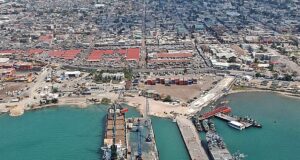28 June, 2018
Alexa Reith – Research Assistant
2018 appears to be quickly shaping up to be a momentous year for nuclear diplomacy and policy. In its first six months a number of formal events, including the NPT Preparatory Review Conference and multiple high level meetings in the Conference of Disarmament, have occurred. More notably though, the same period has also included the United States withdrawing from the 2015 ‘Iran Deal’ and increasing engagement with North Korea.
Appreciating the significance of the latter events and the complex nuclear issues they relate to, an examination of their actualities and potential consequences is worthwhile. Importantly, rather than simply representing opportunities to secure a ‘better deal’ or a ‘bright new future’ for North Korea, they indicate shifts in engagement and diplomatic strategy. They also offer strong lessons in evaluating and implementing nuclear initiatives.
The Iran Deal
On 8 May 2018, President Trump announced that the United States would be withdrawing from the Iran Deal – formally titled the Joint Comprehensive Action Plan (JCPOA). Notably, beyond simply altering the dynamics of the JCPOA and testing the resolve of its remaining members, the effects of such a manoeuvre are multidimensional and evolving. It also offers a powerful reminder of the limited critical assessment and knowledge of the technical realities of nuclear diplomacy.
By way of background, the JCPOA was signed by China, France, Germany, Russia, the United Kingdom, the United States, the European Union (E3/EU+3) and Iran on 14 July 2015. Shortly thereafter, the JCPOA was unanimously adopted by the UNSC on 20 July 2015 and officially implemented on 16 January 2016.
At its core, the JCPOA represents a multifaceted grand bargain. Simply put – in exchange for relief from international sanctions and support in its peaceful nuclear endeavours, Iran agreed to reduce and thereafter restrict the functionality of its established nuclear programme. As means to verify and build confidence in such measures, Iran also reaffirmed under the agreement that it would never seek, develop or acquire nuclear weapons and agreed to monitoring and inspection by the IAEA.
Since the JCPOA’s implementation in 2016, Iran has been certified by the IAEA to be complying with its nuclear-related commitments under the agreement. Markedly, this includes Iran reducing and restricting its nuclear functionality by eliminating 98% of its enriched uranium stockpile, capping production of enriched uranium to 3.67% (with a level of 90% required for nuclear weapons) and repurposing established nuclear processing facilities.
However, such results have not addressed or diluted corollary issues – including Iran’s ballistic missile programme – that are closely tied with Iran’s nuclear functionality and its good faith compliance with the JCPOA. As a consequence, debates regarding the JCPOA’s utility (particularly in terms of inhibiting, rather than merely delaying or masking, Iran’s nuclearisation) have overshadowed any of the quantifiable achievements that have been secured under the agreement and ultimately perpetuated the withdrawal of the United States.
Against such a backdrop, the equal tides of support and criticism that were triggered by the withdrawal of the United States from the JCPOA are unsurprising. However, with many of the polarising assessments merely representing the emotive debates that plague nuclear ethics, little consideration has been given to the broader effects of the event. Many critical questions, including whether the JCPOA can survive without the United States and/or what consequences will stem from its withdrawal, remain immanent.
Overall, the withdrawal of the United States from the JCPOA affects the agreements foundations but does not trigger its immediate demise. That being said, with the United States withdrawal being so closely tied to live issues and the re-introduction of additional sanctions, continuation of the JCPOA will not be without difficulty or controversy. In the short term, efforts will need to be made to rebuild confidence in the agreement. Efforts will be equally required to strengthen engagement and dialogue between the agreement’s remaining states.
Positively, in the weeks following the withdrawal of the United States all remaining members of the JCPOA reaffirmed their commitment and confidence in the agreement. However, with Iran also cautioning that it would intensify its nuclear functionality should any other party withdraw from the agreement, the future of the JCPOA rests upon the delicate balance of attempts to strengthen and protect the reciprocity established under the agreement and the agreement’s remaining states’ commercial and diplomatic abilities to advance a foreign policy independent of the United States.
In the longer term, verification and compliance will be key obstacles for the JCPOA and the broader international community. Notably, the mere demonstration of technical reductions in Iran’s nuclear functionality does not equate to good faith compliance with the JCPOA. Accordingly, in addition to increasing engagement and dialogue through the JCPOA, efforts will also need to be made to mitigate many of the corollary issues that relate to the agreement – something the United Kingdom and France appear confident is possible and best addressed by the continuation of the JCPOA.
Such events will also inevitably impact the likelihood of a new deal being developed and implemented. In this regard, despite the promotions by the Trump administration in terms of its capacity to strike a ‘better deal’, such deals are somewhat of a mythical achievement – often representing idolizations that are incompatible with reality. Moreover, dismissal of the JCPOA without having a clear understanding of the realities and obstacles associated with nuclear diplomacy is not just an unconventional strategy – but a rash one. Ultimately, time will tell whether the United States has the resolve to negotiate a new deal or create circumstances that dissuade Iran from pursuing nuclear capabilities.
The Singapore Summit
In what has been best described as the next act of ‘diplotainment’ between North Korea and the United States, President Trump and Kim Jung Un met in Singapore on 12 June 2018. As the first meeting between any heads of states of North Korea and the United States, the meeting is significant on a number of levels – but far from a complete solution to the nuclear proliferation and security issues of the Korean Peninsula.
North Korea’s nuclearisation has been a live issue for the international community for over two decades. Contextually, North Korea withdrew from the NPT in 2003 and conducted its first nuclear test relatively shortly thereafter in 2006. Conducting further nuclear tests in 2009, 2013, 2016 and 2017, North Korea was rapidly deemed an increasing threat to the peace and stability of the international community.
With such events directly challenging the nuclear non-proliferation regime, strong efforts were adopted by the international community to dissuade and circumvent North Korea obtaining nuclear weapons. Notably since 2006, 22 resolutions have been passed in respect of North Korea. However, whilst being pursued and implemented in various forms, such mechanisms had little effect – with North Korea’s nuclear ambitions clearly outweighing its basic economic and humanitarian needs.
In 2017, concerns regarding North Korea’s nuclear capacity and rationale were sharply tested with both Kim Jung-Un and President Trump engaging in aggressive and threatening rhetoric. However, through participation in the 2018 Winter Olympics and suggestions that it was willing to re-engage in discussions regarding its nuclearisation, North Korea’s exclusion and imminent threat to the international community somewhat softened in 2018. It also paved way for regional relations to improve and be pursued, with Kim Jung-un meeting with Chinese President Xi Jingping in March and South Korean President Moon Jae-in in May.
Building upon these developments, a meeting between the United States and North Korea was increasingly contemplated. However, with social media being a favoured platform for President Trump to discuss non-proliferation strategies, the desirability of such a meeting and its broader ramifications were emotively debated. Nonetheless, following extensive toing and froing, a bilateral meeting was convened on 12 June 2018.
Whilst attracting both controversy and praise, the June meeting is best characterised as oversold and undervalued. Whilst the joint statement published between the states is not a compelling or binding instrument, it possesses some benefits. For example, the agreement identifies many important concepts – including new ‘US-DPKR relations’ and the ‘complete denuclearisation of the Korean Peninsula’, that if adopted would positively contribute to the peace and prosperity of the Korean Peninsula. Moreover, amicably working towards achieving such concepts would enhance regional and international stability by reducing the likelihood of the respective states undertaking provocative nuclear activities.
However, the purported benefits of the agreement must be balanced against the history of engagement with North Korea. Similar agreements have been made and broken in the past. Furthermore, with no reference to the technical actualities involved in denuclearisation (including the arduous and complicated tasks involved in verifiably dismantling and permanently disabling a nuclear arsenal) there is little evidence to indicate that the 2018 agreement is any different from those abandoned in the past, or that there is a mutual understanding of the realities (including process and timing) of North Korea relinquishing its nuclear capabilities.
Unintentional consequences of engaging with North Korea in such a process must also be carefully examined and quantified. In this regard, any recognition of North Korea as a political equal or diplomatic power superficially masks the state’s endemic humanitarian issues and violations. It could also serve as a motivation for other states to pursue nuclear arsenals with a view to obtain similar recognition and engagement opportunities.
Accordingly, the meeting illuminates the benefits of undertaking an unconventional diplomatic opportunity. However, it is only through further negotiations and time that such a meeting can transform into a lasting solution.
Same same, but different
The actualities and potential consequences of the United States withdrawal from the JCPOA and engagement with North Korea offer powerful and comparative lessons in nuclear diplomacy.
Notably, both instances equally demonstrate the manner in which domestic politics influences nuclear diplomacy and decision making. Moreover, whilst reflecting different nuclear issues (arguably non-proliferation in the case of Iran and denuclearisation in the case of North Korea), the events clearly demonstrate the necessity and controversial nature of verification and compliance and the multidimensional effects of nuclear diplomacy.
Appreciating such factors, it is critical moving forward that nuclear initiatives are examined and valued in a multidimensional framework. In this regard, equal consideration must be undertaken in respect of an initiatives’ short and long-term consequences, but also any unintended and/or undesirable outcomes. Consideration must also not waiver in terms of the importance of establishing a clear framework in terms of verification and compliance – as reality indicates that without such, any positive developments attained under the initiative can be undermined and/or undervalued.
Only time will tell whether such practices will be adopted by the Trump administration. Optimistically, if they are, there is a chance that 2018 will be studied in the future as a positive watershed in nuclear proliferation and diplomacy. However, there is an equal chance that 2018 will be hallmarked by errors and nuclear instability.
Image: Kim and Trump shaking hands at the red carpet during the DPRK–USA Singapore Summit (Source: Dan Scavino Jnr.)
 Human Security Centre Human Rights and International Security Research
Human Security Centre Human Rights and International Security Research



